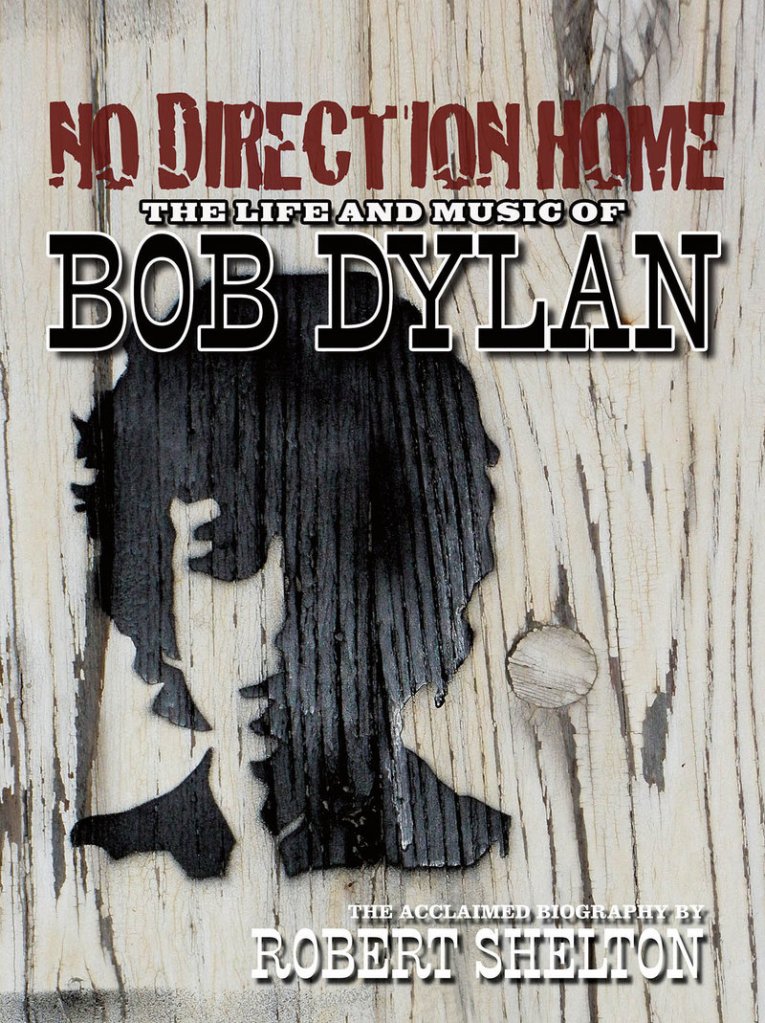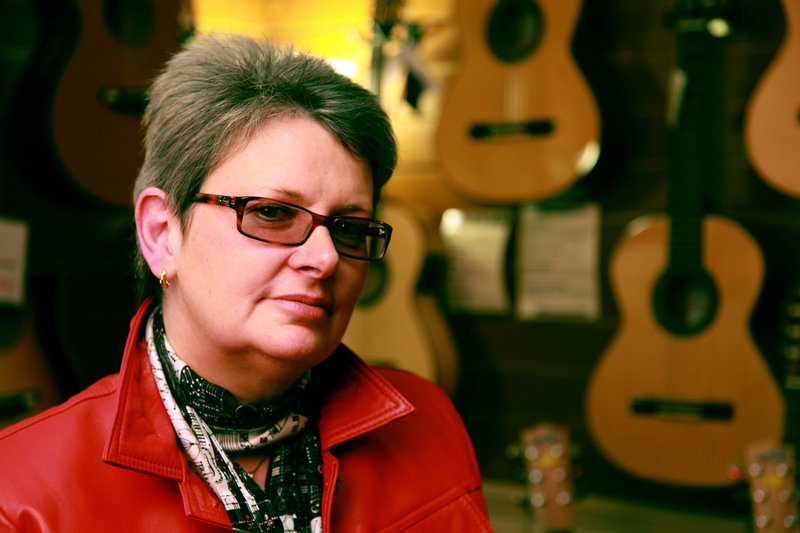Liz Thomson remembers being swept away by Bob Dylan in 1978. She was in college and living in her native England.
At the time, Dylan’s heyday was a decade behind him. He had begun a bit of a comeback a few years earlier, and the ’78 tour represented Thompson’s first opportunity to see him perform live.
Thrilled with the show, she became a dedicated fan. A year later, she attended Dylan Revisited ’79, a conference in Manchester. Chatting with a few friends in a bar, she was told that the American journalist Robert Shelton also was at the conference.
“Someone said, ‘Have you met him yet?’ And as soon as they said the word, Shelton walked in the bar and we had a chat.”
Thus began a friendship that lasted 15 years. Shelton was Dylan’s chief biographer, and had relocated to England. He died in Brighton, England, in 1995.
He also became a mentor to Thomson, encouraging her and guiding her through her early years in journalism. Along the way, he entrusted a tomb-like manuscript to her.
The manuscript became “No Direction Home,” a seminal Dylan biography. Shelton, then writing for The New York Times, wrote the first review of a Dylan concert. Many people credit him with launching Dylan’s early popularity.
With Dylan’s 70th birthday coming up on May 24, Thomson and Patrick Humphries have restored Shelton’s original manuscript and issued a new edition of “No Direction Home” on Backbeat Books.
Shelton assumed his book was on the verge of publication when he gave Thomson a copy of the manuscript in 1979. In 1986, after six years of battles with publishers, the book finally appeared. Thomson thinks the new edition more closely reflects Shelton’s vision. “He always felt the book had been ‘abridged over troubled waters.’ That was his quote,” she said.
She spoke by phone from England last week.
Q: What will people who are familiar with the original book learn from reading your updated version? What’s new in here?
A: You get about 20,000 words of unpublished text. The bulk of the material that was restored is in the chapters from 1961 to 1966, when Dylan and Shelton were buddies, pals and were part of the same gang. There are huge chunks from the 1966 tour. And there is quite a lot added into the first chapter, where Shelton goes to Hibbing (Minn., Dylan’s hometown) to interview the Zimmermans. No other journalist had ever interviewed them. Shelton was the first.
There also is much more sense of the 1950s background from which Dylan emerged. The book now ends in a different place, too. The original edition had a very thin coda. Shelton thought it was unsatisfactory. He wanted to publish the book in two volumes, with the first ending with Dylan’s famous motorcycle crash. Instead, there was this very thin postlude, written when he and Dylan were not close and separated by an ocean.
We edited the final chapter so it concludes backstage at Earls Court in 1978, which was the last time they spent time together. We also brought it up to date with a chronology, to see where Dylan has gone since. The book is still heavily weighted toward the 1960s. Any artist’s formative years are more interesting than the fully formed years. But the book as a whole is in much better shape now.
Q: Why now?
A: At some point, I thought it was important to do a director’s cut. Dylan’s star was waning for quite some time certainly in the 1980s when the book first came out. I thought that with Dylan turning 70, this was the moment to do it.
Q: Why was so much of the original manuscript left out?
A: Some of the stuff that was taken out of the original was taken out for the right reasons. It’s a very big book. The original manuscript was 320,000 words. It was and still is a complicated manuscript. But a lot of the editing was simply a matter of, “We need to lose some text here. We need to cut it back.” Shelton felt very strongly that it all should have context. He never really wanted to write a biography. He wanted to write a serious study, a cultural biography. That is why there was so much background, foreground and context. To the publisher, that was the easiest stuff to slash.
Q: What do you think Robert would say about the new edition?
A: I hope he would be very pleased. It’s presumptuous to guess what he would say. But I think he would agree that it looks beautiful. He might agree that the type is too small. But I hope this is closer to what he wished. I hope that I have done him justice. I do owe a sense of my career to him, so this is a moral debt repaid. He was disappointed with the (original) book. We have given it new life, and I hope it’s something closer to what he wanted than the 1986 edition.
Q: How close was Shelton to Bob?
A: He knocked around with Dylan. They were pals in the village. They went on dates together. When Dylan was going out with Suze (Rotolo), Shelton was with him and whoever he was dating at the time.
Q: Based on your conversations with him, what do you think Robert would think about what Dylan has become? What would he say about Dylan today?
A: I think it’s a great shame that Shelton did not live to see the revival of Dylan’s career. I think he would have a great deal to say, and I think he would be absolutely thrilled. He would feel vindicated. Dylan’s albums of the 21st century have been critically and commercially successful.
He had this rather down period in the 1980s and ’90s, but I think he would be thrilled to see that Dylan was capable of producing good albums and good songs into his 60s and 70s, we hope. He would be thrilled that a new generation has discovered him.
I think he would feel quite proud that this guy whose talent he spotted 50 years ago in a smoky coffeehouse is still creating headlines around the world.
Staff Writer Bob Keyes can be contacted at 791-6457 or at:
bkeyes@pressherald.com
Follow him on Twitter at:
twitter.com/pphbkeyes
Copy the Story Link
Send questions/comments to the editors.





Success. Please wait for the page to reload. If the page does not reload within 5 seconds, please refresh the page.
Enter your email and password to access comments.
Hi, to comment on stories you must . This profile is in addition to your subscription and website login.
Already have a commenting profile? .
Invalid username/password.
Please check your email to confirm and complete your registration.
Only subscribers are eligible to post comments. Please subscribe or login first for digital access. Here’s why.
Use the form below to reset your password. When you've submitted your account email, we will send an email with a reset code.